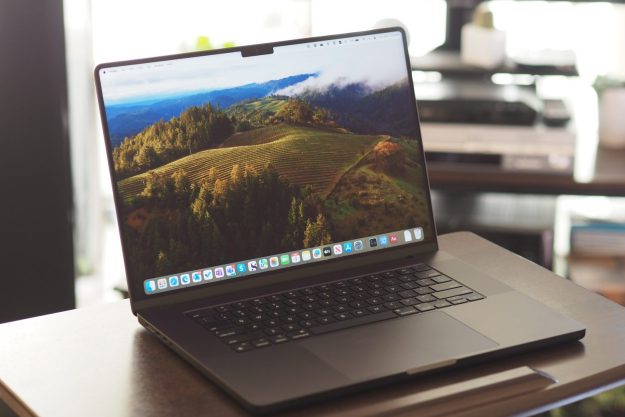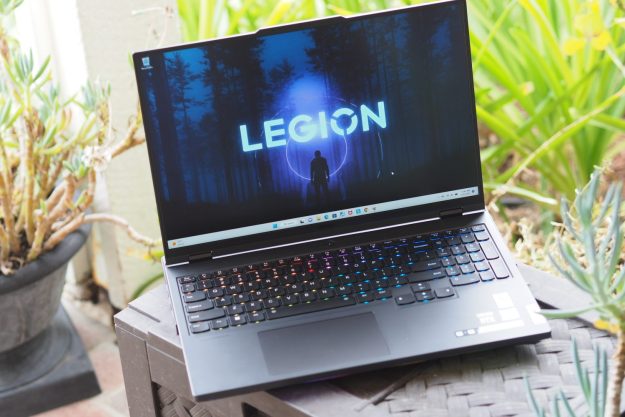
The streetcar taking me home from FedEx was excruciatingly slow. The large cardboard box resting on my legs meant no one could sit beside me and I was collecting more than enough dirty looks to spoil my afternoon. But inside that box was the key to my new Microsoft-centered universe. A piece of hardware that would finally allow me to adopt Windows 8 as my main operating system, something I had been lusting over for months: Lenovo’s Yoga 13. When I finally arrived home and freed it from its corrugated confines, I was pleased to find a good looking, thin Ultrabook. I turned it on and it booted up in under 10 seconds. The Start screen popped up and I tried to use the touchpad to navigate before I remembered I was staring at a touch screen. I immediately snatched it off my desk and flipped the screen all the way back until the Yoga was transformed into Tablet mode. Call it a novelty, but it truly felt like I was stepping into the future.
Then it all fell apart.
My first order of business with Windows 8 was performing a refresh. The Yoga had previously been used as a review device at the office and I wanted to wipe it clean before loading my own files onto it. As I snooped around, however, I noticed the usable storage of the Yoga’s 128GB SSD was closer to 64GB. I searched the Internet and found an official fix from Lenovo. Curious but not quite satisfied, I bookmarked the page but found a better solution in a forum that gave me a bit more free space. Following the tutorial, I backed up my recovery partition to an external hard drive and repartitioned the hard drive to gain 112GB of free space. But when I tried to refresh the OS, it failed.
In what I still think is a natural reaction to a Windows 8 software problem, I visited Microsoft’s support page to figure out what went wrong. Not wanting to make a phone call, I chose the online chat option. I was connected to a nice man with a ponytail, whom I sincerely hoped could solve my problem. According to him, I could just create a USB recovery drive using Windows 8’s built-in tool that would allow me to refresh the OS. I thanked him and tried to implement the instructions he gave me. Unfortunately for me, it didn’t work and I received an error about missing files. Feeling burned by customer service, I decided to pursue the answer on my own.
What I found was both worrisome and comforting. I could use the recovery drive I had backed up to my external hard drive to refresh Windows 8, but I wouldn’t be able to use the drive for anything else. Since I needed my external drive for media storage, I needed a different set up. I had to get the recovery information off of my external hard drive and back onto my computer. Maybe I’m a poor excuse for a technology aficionado, but I thought maybe a simple copy and paste from external drive to hard drive partition would suffice? Wrong. The refresh still failed and since the thought of reading one more forum post made me want to vomit, I went to bed.
In the morning, with a fresh outlook, I decided to once again approach Microsoft’s support team for advice. I was connected via chat to a very lovely lady. She was extremely courteous, made a few good jokes, and was generally great to talk to. She walked me through a rather lengthy process of copying all my system files to a separate partition and told me that should fix my refresh problem. I was overjoyed and happily made small talk with her as we waited for the files to be copied. Once it was finished, I attempted to do a refresh of my computer to see if the recovery partition would kick in. Surprise! It failed. At this point I was pissed off. I skipped Saturday brunch to work on this, spent almost two hours copying files, and had absolutely nothing to show for it. I caught the woman right before she signed out of our chat session.
“Oh,” she said. “You needed a recovery partition?”
“Yes,” I replied. “What did we just do?”
I watched in utter disbelief as she informed me we had just backed up all my files onto a separate partition and that it was merely a copy of my hard drive. Once she realized her error, she quickly tried to rectify the situation by telling me I could call a support line and have a recovery drive on a USB sent to me for free. I picked up the phone immediately and dialed, anxious to get this ordeal behind me after wasting my morning chatting with a stranger – no number of jokes can make up for that. On the phone I was told it would cost around $40 for a USB of Windows 8 and $60 for a disc. “Even if Windows 8 came preinstalled on my device?” I asked. “It’s brand new.” Apparently that was my only option, other than calling the manufacturer directly. I guess owning a Windows 8 device doesn’t mean you own the OS.
I quickly located Lenovo’s customer service number and dialed. Lenovo told me my only option was to have a disc sent to my home. I informed them that the Yoga 13 doesn’t have a disk drive, which the support personnel didn’t seem to realize. In response, I was asked if I would like to purchase an external disc drive. Seriously? I ended up providing my address anyway, figuring I could somehow get it off the disk and onto my computer ingenuity. The disk still hasn’t arrived, though it has been about two weeks since I asked for it.
In the end, I figured out how to make a recovery drive on my own by piecing together advice from Microsoft’s support forums and various snippets found in forum posts. I ran the automated recovery tool and loaded the information onto a spare thumb drive. Then I plugged my external hard drive into the Yoga and compared the file contents with my thumb drive. Locating the files unique to my external hard drive, I copied them to the thumb drive. Voila! A working recovery drive. Problem solved, on my own, in less than 10 minutes.
Now that I had performed a proper refresh and was able to free up my external hard drive, I transferred the files from my MacBook Pro to my Yoga. As they transferred, I was finally able to snoop around Windows 8. After dragging Live Tiles around and downloading a few apps, I checked out the Settings menu and decided it would be a good time to start installing updates. I had about 20 waiting for me. I closed all my programs and hit the update button. I made myself a cup of tea while I waited, idly playing Angry Birds on my Lumia. I watched the first few updates go by without a hitch, impressed by how quickly the system was rebooting. The nightmare was behind me. Or was it?
I may have conquered the lost recovery drive, but a new foe took its place: Update installation problems. For some reason, whether through fault of my own (playing around with partitions) or the quirk of a new operating system, a number of updates failed during installation. I tried restarting my computer as suggested by the troubleshooter, but it had no effect. I forced myself to visit more forums and guided myself through solutions involving downloaded troubleshooting programs and Command Prompt fixes. Nothing worked. I tried installing only important updates, but they still failed. I started selecting one update at a time to see if one specific update was ruining it for the rest but each update crashed during installation.
I dreaded the idea of asking for help, but desperation got the best of me. I visited the now familiar Microsoft support website and fired up another chat session with a representative. I sped through the preliminary troubleshooting, rapidly explaining the solutions I had already tried. The agent was silent for a while before typing a reply that made my blood boil. Apparently “this can happen sometimes” and the only way around it is to download each update individually from a separate website and install them one-by-one. I was – and still am – flabbergasted. I shouldn’t have to contacted support to install updates! This should be the most simple task to execute, but it was confusing and frustrating for me, even though I’m a guy that deals with technology a lot. I can’t even imagine how someone less familiar would handle the situation.
Anyway, after spending an entire weekend getting my Yoga up and running, I could barely look at its smug, soft-touch exterior without sneering. Similarly, the thought of spending any amount of time in Windows 8 made my head spin so I shut it down, closed it up, and resigned myself to a bottle of wine. Call me crazy, but breaking out the liquor to cope with the frustrations of a device you haven’t even used yet is less than ideal. This should be fun. What the hell?
Stay tuned next Monday for the next edition of Life and Tiles, when Andrew encounters yet more issues with the Lenovo Yoga 13. To catch up, read the entire Life and Tiles of a Windows 8 Convert series.
Editors' Recommendations
- Why the latest ThinkPad X1 Yoga Gen 8 isn’t worth the upgrade
- How to uninstall Windows 10 and downgrade to Windows 8.1


